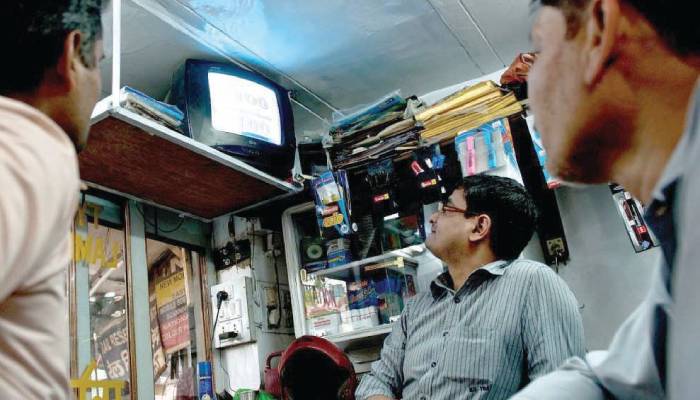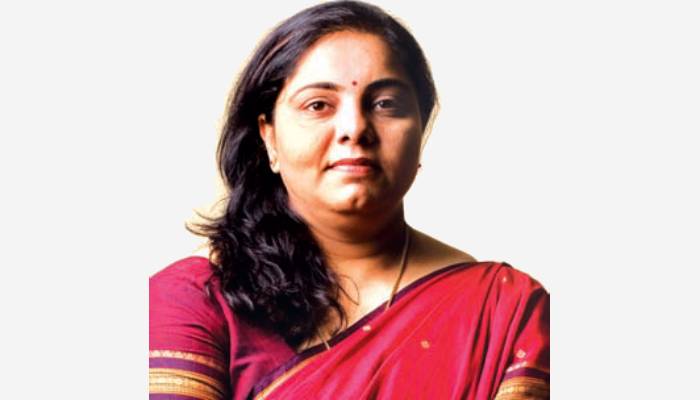
or

With the allegations of manipulative abuse of viewership ratings by TAM Media Research, it finds itself in the eye of the storm as NDTV has instituted a suit against it in a US court. The different regulators are either contemplating action against it or have already done so. The jury is out on the larger role of transparency and fair dealing in the viewership ratings business, AnishDayal recounts the issues involved
It would not be an exaggeration to say that NDTV, the Indian media company promoted by Dr.Prannoy Roy, recently dropped a legal bomb on the media and advertising world, sending shock waves ripping through the industry and locking the Indian media firm in a pitched legal battle with global media conglomerates.
NDTV filed a US$1.4 billion lawsuit in a New York court recently in July alleging negligence, fraud, corrupt practices, tampering, falsification and fabrication of data against The Nielsen Company, a global research and information firm, and its partner Kantar Media Research which jointly run TAM (Television Audience Measurement) Media Research Private Limited, an Indian concern which is the prime audience measurement and TV ratings agency.

Today the entire news content has got diverted from public utility motive to fossilizing entertainment with urban centric content. As per the data sent by the TAM management out of total 8200 nearly 3200 have been set up in seven metropolitan and big cities (with a combined population of four crore) whereas for rest of the country with a total population of 117 crore there are only 5000 tam meters. It defies all basic principles of representative sampling.
What is insidiously more damaging is the fact that while for Ahmedabad with a population of 32 lakh, there are 195tan meters, for a state like Bihar with a population of 10.50 crore there had been no meter for the past eight years. Two years only 165 meter were installed. That precisely is the reason why when Mumbai faces small downpour the channels carry it the whole day but when urea and Diammonium phosphate (DAP) remains in utter scarcity in agricultural districts like Bulandshahar (UP) or Siwan (Bihar)during Rabi sowing, it does not receive attention of channels because there is no tam meters in these districts. Rape in Delhi gets a different treatment than a rape in Guwahati. Entire North East states till date does not have a single tam meter.
The first thing that is required to be done is to introduce at least 30,000 meters in the first phase and in next four years it should be increased to one lakh. Besides it should be brought out of the clutches of market forces or government should introduce legislation in this regard. So far as expenditure in this exercise is concerned, the electronic channels as industry, the advertisers and the Government should share expenditure in equal ratio as it is great public cause that will be served if viewership measuring system is representative and sans any market consideration.
The dramatis personae Nielsen and Kantar are the world’s leading audience measurement research organisations (Kantar being a group company of WPP, the marketing conglomerate promoted and run by Sir Martin Sorrell).
NDTV, inter alia, alleges that TAM has established a monopoly over TV audience rating systems in India and therefore almost all of advertising and media buying in the country is based upon itsdata. TAM, it is alleged, misused its position and is responsible for rigging its data, publishing inaccurate data and not employing sufficient means to ensure that its processes are fair and transparent.
NDTV also alleges that TAM and its representatives have been working at the behest of some channels and to the benefit of politicians, who have large direct or proxy stakes in media channels. TAM collects data of viewership of each channel by installing “people meters” in TV homes across the country, these installations are meant to be confidential, randomised and un clustered in order that the audience in such ‘people meter’ homes cannot be bribed or manipulated to artificially enhance the ratings of a particular channel.
NDTV alleges that TAM personnel actively participated in bribery and those intermediaries and consultants were rampant in their system. The reason for NDTV suing in New York is primarily that it is hoping that the allegations will stick on TAM’s parents Nielsen and Kantar, who apparently promised remedial measures in response to NDTV’s list of grievances with this permeable system, but by having failed to deliver on those promises are guilty of negligence, reckless disregard of duties, violations of the US Foreign Corrupt Practices Act and other acts and omissions.
While Nielsen and Kantar are tight lipped about its position considering that the matter is sub judice, they have responded positively to the suggestions by the media and provided a six-point action plan to the Advertising Agencies Association of India (AAAI) and the Indian Society of Advertisers (ISA).
Meanwhile WPP’s founder and chief executive, Martin Sorrell has reacted strongly to these allegations and hasthreatened to file a defamation suit against NDTV over aspersions cast in the media and have filed to have the strike out the lawsuit. While we await the results from this high charged legal battle being wrestled on foreign shores, it is worthwhile to assess the legal position regarding ratings services in the country.

Absolutely, the current television ratings need an urgent relook. More importantly they need to be made more relevant for our complex media scenario in addition for making them more transparent. Worldwide, a combination of methods and tools are used to measure television audience. The existing TV meters used to capture this data in our country is not only inadequate but also statistically inadequate. Sample selection, spread and size need to address our complex media ecosystem with the diverse regional, language and niche channels. For example, the current system of TRP ratings is based on TV meters installed in 8,000 or so households in urban locations across most states. This excludes large portions of the rural population, and certain regions such as the north-east and Jammu and Kashmir.
Granted any system of measurement will be expensive but its utilisation and relevance is gaining ground as advertising and decision making based on this information increases. Like the NRS, a joint industry body needs to commission this exercise with checks and balances in place to meet our unique requirements. IBF did register BARC to undertake this but somehow vested interests in maintaining the current stalemate, has differed its plans. I also believe there should be more diverse types of television audience studies – not just one standard system or currency.
It is this unreliable rating system that has resulted in sensational yet similar kind of programming across channels today. For example, the multiple crime based programmes and astrology shows across the news channels exist because of TRP ratings. The rise of entertainment in news channels is also arguably based on TRP ratings. Even the overbearing, hectoring style of some anchors is a result of this herd mentality triggered by ratings. Television ratings were initiated for decisions regarding advertisement planning and buying. However, the heavily advertisement dependent television industry makes most of its content strategy and decisions based on the same. It’s become the lowest denominator of deciding what interests’ Indian television audience. More dangerously, these ratings have even become indicators of quality!
TAM offers ratings and media research services for a fee that it charges from whoever wishes to take its data. It is a purely private enterprise and its clients (which would typically be broadcasters, media buying agencies and advertisers) are free to accept or reject the data that it offers. However, if TAM breaches its contractual promise of transparency, fair assessment and that it religiously follows a certified process for collecting and analysing this data, then its client is entitled to allege and sue for damages caused due to such breach.
However, whether TAM or its process is or can be subject to an overall regulatory process imposed upon by the government or any regulator is an issue, which merits some discussion. Reportedly, following close on the heels of the NDTV lawsuit, the Ministry of Information and Broadcasting has sent notices to TAM to enquire about the steps it proposes to take to address these concerns. There is also a buzz that the Competition Commission of India plans to take suo motu action against TAM under Section 4 of the Competition Act 2002, which relates to abuse of a dominant position by an individual or firm and looks into whether an enterprise, directly or indirectly, imposes unfair or discriminatorycondition in purchase or sale of goods or services.
There is legitimacy in being concerned as to whether a responsible and reputed corporate whose business model is solely dependent on its robust, fair and transparent (audience measurement) process on which reliance is placed by many, should be answerable to the industry (like in case of Price Waterhouse Coopers’ alleged audit lapses in the Satyam issue).
However, the rhetoric that the media industry has been a miserable victim to this process, according to me, is misplaced or that it has some large democratic or nation-wide implications. Firstly, audience research principally affects and is meant for deciding advertising targets and choosingfrom media space offered by numerous TV channels. It does not influence the public but only affects the relative earnings of media owners and other private enterprise. Secondly, there are no regulations, which govern or regulate the creation or operation of a media audience ratings agency. Thirdly, assuming the government had a role or duty to do so, it ought to have already complied with it and therefore for the government to take a position that merely because a private enterprise has been callous as there is so much unfair skew in the market, is a bit late. Fourthly, setting up audience ratings entities has been typically a joint industry initiative in most countries i.e. between advertisers, advertising agencies, media buying agencies and media owners and broadcasters. It is the lapse of the industry in India that they have been unable to come to a common platform and implement a universal desirable vision.
An initial joint industry body got disbanded in the 90s. There was an initiative to set up the Broadcast Audience Measurement Council (BARC) as an independent audience measurement agency—based on the recommendations of the Amit Mitra committee, which has not seen much action, but only recent murmurs and pushes by Prasar Bharati and the government that its functioning should be fast tracked.
In 1994, the Media Research Users Council (MRUC) was set up as a registered not-forprofit body of members drawn from major advertisers, advertising agencies, publishers and broadcast/other media to commission media research for the benefit of its users. The Indian Readership Survey (IRS) is one of its most prime and popular outputs. There is also a festering issue as to how any such umbrella organisation, which would carry out reliable research on which all advertising in the country would depend upon, would be funded. BARC’s constitution mulls 60% funding from broadcasters, followed by advertising agencies and the smallest contribution from advertisers. This is in consonance with trends and practices around the world. The UK’s official television ratings across all platforms are through the BARB (Broadcasters’ Audience Research Board), a non-profit organisation funded by major players in the industry like BBC, ITV, Channel 4, BSkyB.
There is no reason why this implosion should not throw up a credible viable alternative for the industry. What role TAM plays in it finally will be up to a joint industry consensus and possibly upon the result of the NDTV suit.
Whether the regulator like the TRAI or the government can have any role in this is something which needs to be assessed. At the best, it may be able to act as a facilitator or what would essentially be a joint industry initiative. Having a purely state controlled body for measuring audience ratings may also be a recipe for disaster, further corruption and mismanagement but will not be a real solution.
Anish Dayal, Advocate, Supreme Court, is an alumnus of Cambridge University and specializes in media, entertainment and sports law.

Lex Witness Bureau

Lex Witness Bureau

Lex Witness Bureau

For over 10 years, since its inception in 2009 as a monthly, Lex Witness has become India’s most credible platform for the legal luminaries to opine, comment and share their views. more...
Connect Us:


The Grand Masters - A Corporate Counsel Legal Best Practices Summit Series
www.grandmasters.in | 8 Years & Counting
The Real Estate & Construction Legal Summit
www.rcls.in | 8 Years & Counting
The Information Technology Legal Summit
www.itlegalsummit.com | 8 Years & Counting
The Banking & Finance Legal Summit
www.bfls.in | 8 Years & Counting
The Media, Advertising and Entertainment Legal Summit
www.maels.in | 8 Years & Counting
The Pharma Legal & Compliance Summit
www.plcs.co.in | 8 Years & Counting
We at Lex Witness strategically assist firms in reaching out to the relevant audience sets through various knowledge sharing initiatives. Here are some more info decks for you to know us better.
Copyright © 2020 Lex Witness - India's 1st Magazine on Legal & Corporate Affairs Rights of Admission Reserved